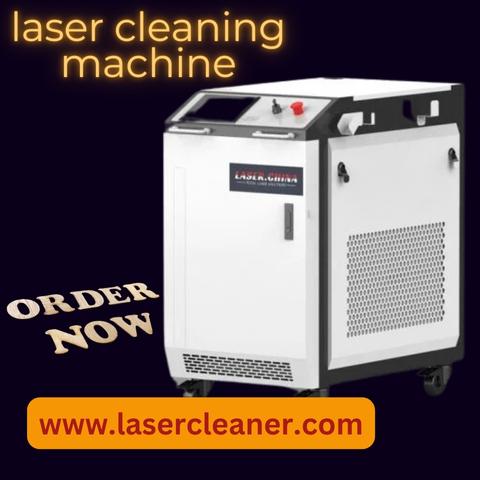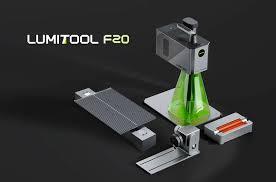A laser cleaning machine is transforming how industries manage rust, paint, grease, and oxide removal. Instead of relying on harsh chemicals or abrasive blasting, it uses high-energy laser beams to clean surfaces precisely and efficiently. This technology is now an essential part of metal fabrication, automotive maintenance, aerospace engineering, and restoration work.
Laser cleaning relies on a process called laser ablation, where the surface contaminants absorb laser energy and vaporize instantly. The underlying material remains unaffected, which is why it’s widely preferred for delicate and high-value surfaces. The precision, speed, and cleanliness of the process make it a go-to tool in modern industrial maintenance.
The Working Principle Behind Laser Cleaning Machines
The laser cleaning machine operates using short, high-intensity laser pulses directed at the contaminated area. When the beam interacts with rust, paint, or dirt, the contaminants absorb the energy and detach from the base surface. The mechanism works on three essential principles — absorption, vaporization, and removal.
Laser light is delivered through fiber optics or a handheld scanning head, depending on the type of system. Once the beam hits the surface, it creates a microscopic plasma layer that helps lift contaminants. The entire process is controlled by adjusting parameters such as pulse energy, frequency, and beam diameter. This flexibility ensures efficient cleaning on different materials, from metals to composites.
Unlike traditional cleaning systems, laser cleaning leaves no secondary waste. The removed material either vaporizes or becomes fine dust, which can be easily vacuumed. It’s a dry, eco-friendly, and contact-free process that ensures consistent surface quality without degradation.
Industrial Applications of Laser Cleaning Machine
The laser cleaning machine serves multiple sectors with varying surface preparation and cleaning needs. Its versatility and control make it suitable for tasks that demand precision and cleanliness.
1. Automotive Industry
In automotive production and maintenance, laser cleaning removes oxides, grease, and coatings from parts before welding or painting. It ensures strong weld joints and clean bonding surfaces, improving the durability of components.
2. Aerospace and Aviation
Aircraft maintenance often involves removing paint or oxidation from aluminum and titanium components. Laser cleaning achieves this without altering the material structure, which is vital for flight safety.
3. Metal Fabrication
Manufacturers use laser cleaning to prepare metal surfaces for coating, welding, or adhesive bonding. It eliminates the need for chemical pre-treatment, saving time and reducing operational hazards.
4. Heritage and Restoration Work
Laser cleaning has also become a valuable tool in cultural heritage preservation. It can remove pollutants, dirt, and biological growth from sculptures, stones, and artifacts without harming the base material.
5. Power and Energy Sector
Power plants, turbines, and transmission systems require periodic rust and residue removal. Laser cleaning machines perform this effectively, keeping the systems efficient and preventing corrosion-related failures.
How Laser Cleaning Differs from Conventional Methods
The laser cleaning machine introduces a non-abrasive, non-contact, and precise method compared to sandblasting, dry ice blasting, or chemical cleaning. Traditional cleaning methods often damage the base material, generate waste, or require post-cleaning treatments. Laser cleaning, however, only targets unwanted contaminants through selective absorption.
Its controlled laser parameters can be adjusted according to the material type and contamination level. This adaptability makes it ideal for both micro cleaning tasks and large industrial surfaces. Additionally, it operates without consumables, reducing maintenance requirements and operational downtime.
Types of Laser Cleaning Machines
There are several categories of laser cleaning machine, each designed for specific operational needs.
1. Pulsed Laser Cleaning Machine
Pulsed systems emit light in bursts, providing high peak power in short durations. They are suitable for removing thin coatings, rust, and oxides without transferring excessive heat.
2. Continuous Wave (CW) Laser Cleaning Machine
CW lasers deliver a constant beam of energy, ideal for large-area cleaning or heavy contamination. They are commonly used in shipyards, power plants, and large manufacturing units.
3. Handheld Laser Cleaning Machine
These compact and portable devices are easy to operate and suitable for on-site maintenance. They are popular for automotive repair shops and metal workshops that need flexibility.
4. Automated Laser Cleaning System
Integrated with robotic arms or conveyor systems, automated laser cleaning setups are used in mass production environments for repeatable and consistent results.
Important Parameters to Consider in Laser Cleaning
Operating a laser cleaning machine requires understanding certain parameters that influence its efficiency and precision.
-
Laser Power: Determines the intensity of the beam and the depth of cleaning.
-
Pulse Frequency: Controls how many laser bursts occur per second, affecting speed and energy delivery.
-
Spot Size: Influences focus and cleaning coverage area.
-
Scanning Speed: Adjusts how fast the laser head moves across the surface.
-
Material Type: Different materials have different absorption properties; settings must be fine-tuned accordingly.
A balance among these parameters ensures optimal cleaning without surface damage. Skilled operators or automated controls manage these aspects to maintain consistent performance.
Environmental and Safety Aspects
Using a laser cleaning machine contributes significantly to environmental sustainability. It eliminates chemical waste, minimizes airborne contaminants, and reduces water consumption. Since no chemical solvents or abrasive media are involved, operators work in a cleaner, safer environment.
Safety measures still remain essential. Proper eye protection, fume extraction systems, and enclosure setups are recommended to avoid exposure to laser radiation or vaporized materials. With correct handling, laser cleaning remains one of the cleanest and safest industrial surface treatment methods available.
Maintenance and Operational Care
To ensure long-term reliability of a laser cleaning machine, routine maintenance is necessary. Regular inspection of optics, cooling systems, and power sources helps maintain stable performance. The lens and fiber connectors should be kept clean and dust-free. Proper software calibration also ensures consistent laser beam output and accuracy.
Operators should follow manufacturer guidelines for usage and downtime storage. Since the system relies heavily on precise optical components, avoiding physical shocks and environmental moisture is crucial. Modern systems are designed with built-in monitoring and diagnostics that simplify maintenance and detect early performance issues.
Cost Efficiency and Productivity Impact
Implementing a laser cleaning machine can significantly improve operational productivity. It reduces process time, eliminates the need for consumables, and lowers waste disposal costs. Over time, this translates into lower maintenance expenses and increased equipment life.
In industrial environments where surface quality determines performance — such as welding, coating, or bonding — laser cleaning ensures consistent results. The precision and automation potential enhance throughput, making it a valuable long-term investment for manufacturers aiming to modernize their operations.
Future of Laser Cleaning Technology
The advancement of laser cleaning technology is rapidly reshaping industrial standards. Compact fiber laser sources, improved scanning heads, and intelligent software controls are making systems more efficient and user-friendly. In the future, integration with AI-driven vision systems and robotics will further enhance accuracy and automation.
As industries move toward sustainable practices, the demand for laser cleaning machines continues to rise. The technology offers not only environmental compatibility but also operational precision — essential factors for the future of industrial maintenance and manufacturing.
Final Thoughts
The laser cleaning machine has redefined how industries approach surface cleaning and preparation. By combining speed, precision, and eco-friendly operation, it has replaced outdated methods that rely on abrasives or chemicals. From delicate artifact restoration to large-scale metal processing, laser cleaning ensures uniform results and minimal waste.
In a world demanding cleaner, faster, and safer industrial processes, adopting laser cleaning technology is a step toward modern efficiency and sustainable production. It’s not just a tool — it’s an evolution in how we maintain and prepare surfaces for the future of industry.



